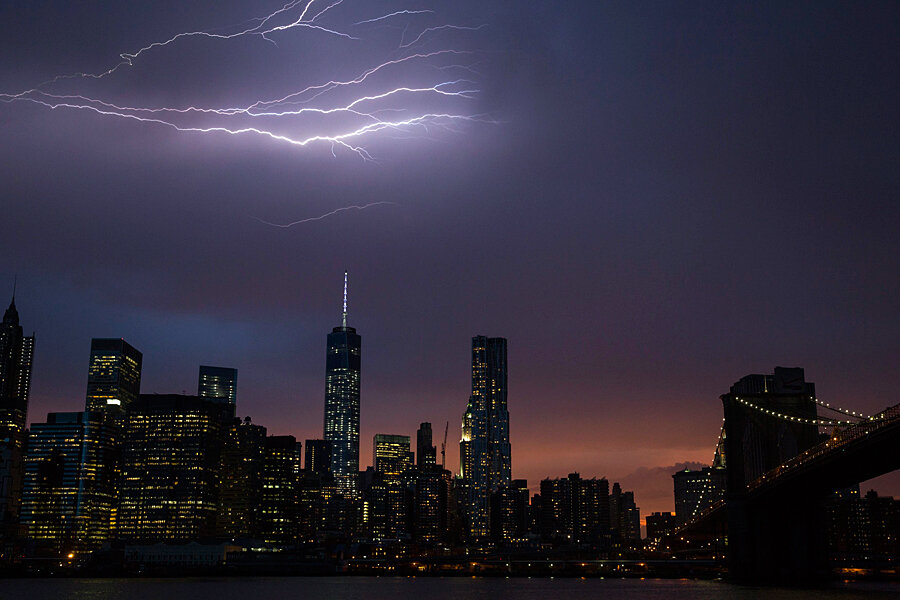Lightning strikes NYC: Fireworks came early in New York
Loading...
| New York
A spectacular storm of lightning flashed through New York City for more than an hour Wednesday evening, leaving millions of residents abuzz Thursday morning with tales of jolts just across their streets and pictures of mesmerizing electric bolts across the Manhattan skyline.
But as the city joins the rest of America in anticipating fireworks of a different sort this Fourth of July weekend, stormy weather still looms over holiday barbecues and patriotic revelries, with hurricane Arthur, the first named storm of this year’s Atlantic hurricane season, threatening the East Coast.
Which could dampen New York’s 38th Annual Macy’s 4th of July Fireworks scheduled for Friday evening, weather permitting. The city is under a flash flood watch through Friday morning, as storms continue to move through the area throughout Thursday.
“Places like New York City and Philadelphia will see some pretty good rain through Friday morning, but then things will improve quickly as we head into the afternoon hours,” said AccuWeather meteorologist Dan Kottlowski.
The muggy weather in New York City hit 90 degrees for the first time this year on Wednesday as the lightning storm passed through at dusk. When the displays of lightning began to move out, the city witnessed a glowing-red, yellow, and greenish sunset in the stormy evening gloaming, as lightning continued to flash throughout the sky.
“Isn't this the end of Raiders of the Lost Ark?” tweeted Tim O’Brien, publisher of Bloomberg View, reposting one of the across-the-street bolts first tweeted by NBC News and referencing the famous denouement of the 1981 film. The spectacular bolt was first caught on video and posted to Instagram under the account of Dinesh Penugonda.
The social mediaverse buzzed worldwide with “Wows!” and “Insane!” posts as people from Paris to Hong Kong commented on the lightning-in-a-smartphone shots posted by users in N.Y.C.
The United States typically witnesses more than 22 million lightning strikes each year, with the greatest occurrences in central Florida in an area known as “Lightning Alley.” Lightning is more common in the moist, tropical air of the Gulf states, and its bolts are blamed for 55 to 60 deaths a year nationwide.
New York sees far fewer jolts than these Southern states, but its dense population ranks it eighth among states for the most fatalities from lightning.
On Wednesday evening, however, as rainless lighting continued to flash, New Yorkers may have been awed most by the sunset afterward.
“The Lightning Display Over NYC Last Evening Was INSANE, But You Won't Believe What Happened After,” tweeted Rafat Ali, founder of Skift, a travel industry media site, posting a picture of the poststorm golden sunset.
“Caught the shot of the night – lightning hitting the sunset #nofilter #nyc #lightning,” tweeted Jim McClure, a staffer with Howard Stern’s radio show who lives in Hell’s Kitchen in Manhattan, linking the spectacular shot on his Instagram feed.
New Yorkers will be looking forward to Friday’s holiday fireworks, hoping hurricane Arthur won’t spoil the view, but Wednesday evening’s show of nature will be hard to top.








